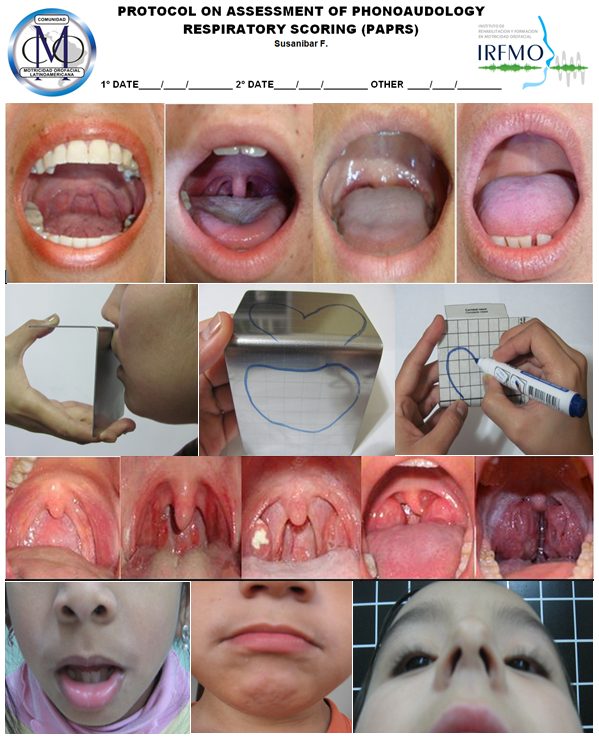Question & Answer - Oral Sensory-Motor, Myofunctional, Vocal Tract, & Airway Information
How can speech therapists and others appropriately and adequately assess respiration?November 2015 |
|||
|
ANSWER FROM Franklin Susanibar, Fonoaudiólogo de IRFMO - Instituto de Rehabilitación y Formación en Motricidad Orofacial y del Instituto Psicopedagógico EOS Perú The book Phonoaudiological Assessment of Respiration by Franklin Susanibar and Cynthia Dacillo presents a systematic assessment of the respiratory system (evaluating the structure and function of the body, face, mouth, breathing, and voice) based on current research. The following is an excerpt from the back cover of the book: The challenge that the speech therapist always faces when assessing the conduct of the patient´s breathing mode is to assess inspiration. This means that the permeability tests through the rhino hygrometric technique, in which the expiratory airstream condenses when in contact with a cold surface such as the mirror of Altmann or Glatzel, fails to show how the air enters the airways. Although it may indicate a possible obstruction, this is not a test that would determine an accurate diagnosis of the respiratory mode and should be only considered as a semi-objective technique. On the other hand, tests that assess some morphological and functional characteristics are also suggested along with measuring the pulmonary function, such as observing the size, color, and position of the lips, size and shape of the nostrils, and other aspects. However, an open mouth is not a sufficient indicator of oral breathing, since the patient may be occluding the oral cavity with the tongue. Also, anamnesis [i.e., reason for consultation] and clinical interviews that will address relevant aspects of healthy breathing, inquiry over sleep quality, [and] treatments performed are suggested to complement more physiological tests and any other specific tests.
Therefore, to achieve the objectives outlined in the phonoaudiological assessment is to delineate the content of the assessment based on the approaches of Marchesan, Di Francesco, Tessitore, Pierotti, Barreto, [and] Genaro et al., who created the Protocol on the Phonoaudiological Assessment of Breathing with Scoring (in Portuguese: Protocolo de Avaliação Fonoaudiológica da Respiração com Escores – PAFORE). It contains topics relevant to the assessment of respiration, includes data on clinical interview, and also includes anamnesis and clinical examination, plus a permeability test of expiratory airflow using the oronasal plate adapted by Susanibar (OPAS). This is an important and ground-breaking assessment protocol. So, please take a minute to download and view the Protocol of Phonological Assessment of Breathing with Scoring (PROPABS): Download Now You may also purchase the book Phonoaudiological Assessment of Respiration which contains specific assessment techniques via photos, drawings, charts, and descriptions on Amazon.com. ABOUT THE AUTHORS OF THE BOOK Franklin Susanibar is a speech therapist in Peru who is dedicated to the diagnosis and treatment of orofacial myofunctional disorders. Franklin lectures on this topic at a number of universities and conferences around the globe. You may email Franklin (frank_susanibar@yahoo.com.br) and visit his website. Cynthia Dacillo is a special educator with specialization in communication and orofacial myofunctional disorders. She is a diagnostician and interventionist on several teams and a founding member of the Latino American Orofacial Myology Community (CMOL). You may email Cynthia at cynthia.dacillo@hotmail.com. PERMISSION The excerpt from the back of the book Phonoaudiological Assessment of Respiration and the link to the PROPABS were submitted by Franklin Susanibar. Therefore, permission to publish/post these items was provided by Franklin Susanibar. |
|||
